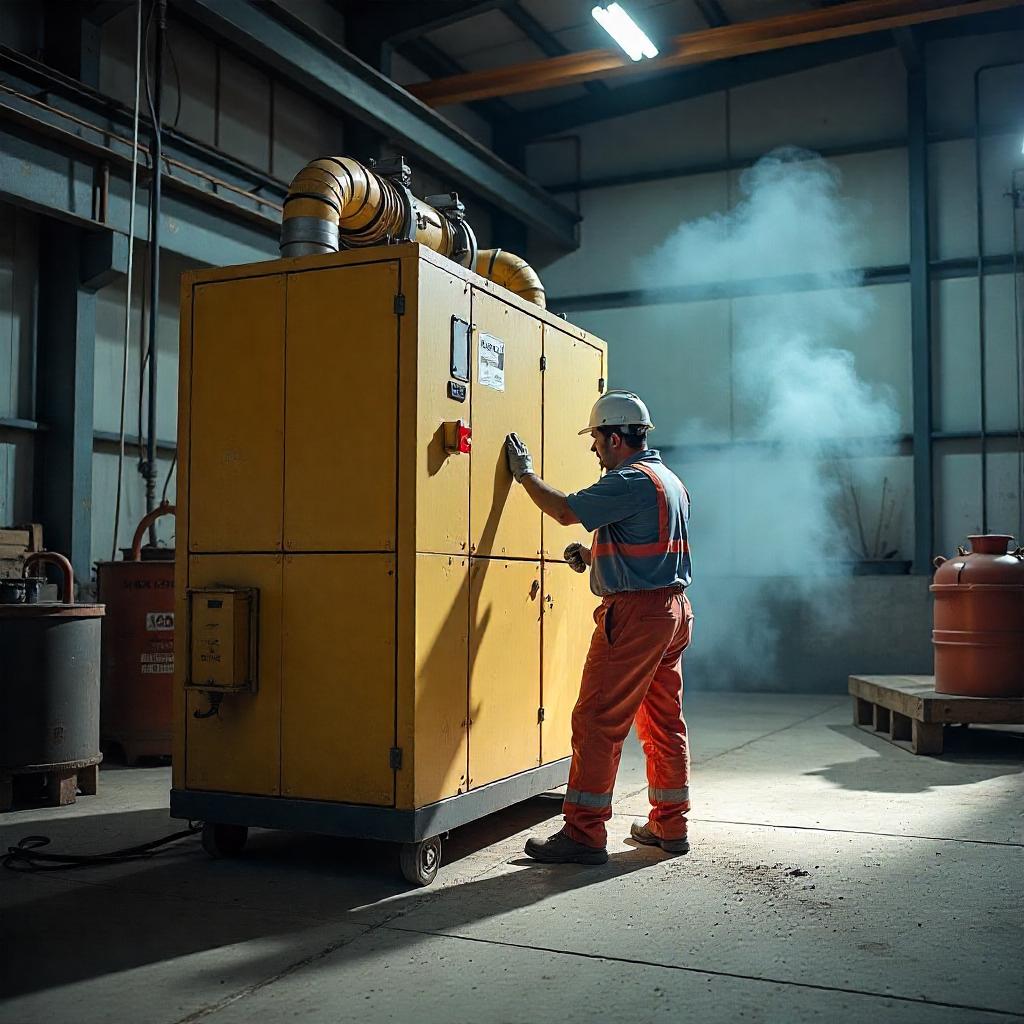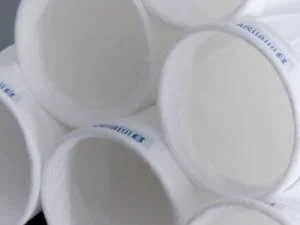What is a Dust Collector?
A dust collector is a device that removes dust and other particles from the air in industrial environments. Its main function is to keep the air clean and safe for workers. Dust collectors help reduce health risks and improve the work environment.
There are several types of dust collectors:
- Baghouses: These use fabric filters to trap dust. Air passes through the bags, and dust collects inside.
- Cyclones: These spin the air very fast. The force of the spin pushes dust to the bottom, where it collects.
- Wet Scrubbers: These use water to catch dust. The wet air traps particles, and clean air goes out.
Each type has its own way of working, but all dust collectors aim to keep the air clean.
Importance of Dust Collection Systems
Dust collection systems are important for health and safety in many workplaces. They help to remove harmful dust and particles from the air. This keeps the environment cleaner and safer for everyone.
Here are some key benefits of dust collection systems:
- Protect Health: Dust can cause serious respiratory diseases. A good dust collection system reduces the amount of dust in the air. This helps workers breathe easier and stay healthy.
- Meets Regulations: Many countries have strict rules about air quality. Dust collection systems help businesses follow these environmental regulations. This can prevent fines and legal issues.
- Improves Safety: Dust can make floors slippery and create fire hazards. By collecting dust, these systems make workplaces safer. This helps to reduce the risk of accidents and injuries.
- Enhances Productivity: A cleaner workplace can lead to better focus and efficiency. When workers do not have to deal with dust, they can concentrate better on their jobs.
- Protects Equipment: Dust can damage machines and tools. Dust collection systems keep equipment cleaner and working longer. This saves money on repairs and replacements.
Dust collection systems play a vital role in creating a healthier and safer work environment. They protect both workers and equipment from the dangers of dust.
How Does a Dust Collector Work?
A dust collector works by cleaning the air in a space where dust and other particles are present. It has a simple way of capturing, moving, and collecting dust. Here is how it operates step by step.
- First, the dust collector uses a fan to pull air into the system. This fan creates a strong airflow that brings in air mixed with dust. When the air enters the dust collector, it goes through a filter. The filter traps the dust particles while allowing clean air to pass through.
- Next, the dust moves through a series of pipes or ducts. These pipes guide the dust-laden air to the collector. As the air travels through the pipes, the dust particles stay behind because of the filter. This process keeps the air clean.
- Finally, the dust collects in a container or bag inside the dust collector. When the container is full, it can be emptied. Some dust collectors have a mechanism to shake or remove the dust from the filter automatically. This keeps the filter clean and ready to trap more dust.
Overall, a dust collector helps keep the air clean by capturing, moving, and collecting dust effectively.
Types of Dust Collectors
Dust collectors come in different types. Each type has its own advantages and disadvantages. Knowing these can help someone choose the right dust collector for their needs.
- Baghouse Dust Collectors
Baghouse dust collectors use fabric bags to trap dust. They are effective in collecting fine particles.
- Advantages: They are efficient and can handle large volumes of dust.
- Disadvantages: They can be expensive and require regular maintenance.
- Ideal Applications: They work well in industries like woodworking and metal processing.
- Cyclone Dust Collectors
Cyclone dust collectors use centrifugal force to separate dust from air. They do not use filters.
- Advantages: They are low maintenance and can handle heavy dust loads.
- Disadvantages: They may not capture very fine dust.
- Ideal Applications: They are good for sawmills and grain handling.
- Wet Dust Collectors
Wet dust collectors use water to capture dust particles. They are great for flammable dust.
- Advantages: They cool the air and reduce fire risks.
- Disadvantages: They can lead to water waste and require more space.
- Ideal Applications: They are used in metalworking and chemical processing.
- Electrostatic Precipitators
Electrostatic precipitators use electricity to charge dust particles and remove them.
- Advantages: They can collect very fine dust and have low operating costs.
- Disadvantages: They can be complex and need regular checks.
- Ideal Applications: They are ideal for power plants and incinerators.
- Portable Dust Collectors
Portable dust collectors are small and can be moved easily.
- Advantages: They are convenient for small spaces and jobs.
- Disadvantages: They may not handle large volumes of dust.
- Ideal Applications: They are great for workshops and DIY projects.
Each type of dust collector has its own role. The choice depends on the specific needs and environment.
Factors to Consider When Choosing a Dust Collector
When choosing a dust collector, several factors are important to consider. These factors help ensure that the dust collector works well for specific needs. Here are the key points to think about:
- Dust Type: Different types of dust require different collectors. It is important to know if the dust is fine, coarse, or hazardous. Some dust can be harmful, so a specific type of collector is needed.
- Airflow Requirements: Each dust collector has a certain airflow capacity. It is essential to match the collector’s airflow to the size of the workspace. Too little airflow can lead to dust buildup.
- Space Constraints: The size of the area where the dust collector will go matters. Some collectors are large, while others are compact. It is important to measure the space and choose a collector that fits.
- Maintenance Needs: All dust collectors need maintenance. It is important to consider how often the collector needs cleaning or filter changes. A collector that is easy to maintain will save time and effort.
These factors help users choose the right dust collector for their needs.
Maintenance and Troubleshooting
Dust collectors need regular maintenance to work well. This helps keep the air clean and the machine running smoothly. Here are some maintenance tasks and common issues to keep in mind.
- Check the filters. Make sure the filters are clean. Dirty filters can make the dust collector less effective.
- Inspect the hoses. Look for cracks or holes in the hoses. Damaged hoses can let dust escape.
- Clean the dust bin. Empty the dust bin regularly. A full bin can cause blockages.
- Examine the fan. Check if the fan is running well. A noisy fan may need repairs.
- Look for leaks. Check for air leaks around joints and connections. Leaks can waste energy and reduce performance.
- Tighten loose parts. Make sure all screws and bolts are tight. Loose parts can cause vibrations and noise.
- Monitor the pressure gauge. Keep an eye on the pressure gauge. If it shows low pressure, something might be wrong.
- Schedule regular service. Plan for professional maintenance. Experts can spot issues before they become big problems.
Common issues can happen with dust collectors. If the machine does not collect dust well, it may be due to a full dust bin or dirty filters. If it makes strange noises, there could be a problem with the fan or loose parts. If the pressure gauge is low, check for leaks. Regular maintenance can help avoid these problems.
Innovations in Dust Collection Technology
Innovations in dust collection technology focus on making systems better at removing dust while using less energy. These advancements help businesses run more smoothly and keep the air cleaner.
- Energy Efficiency: Recent advancements in dust collection technology have improved energy efficiency. New systems use less power to run. They can also adjust their energy use based on how much dust is present. This means they only use the energy they need. This change helps save money on energy bills.
- Automation: Automation is another key advancement. Some modern dust collection systems work automatically. They can turn on and off without human help. This feature makes them easier to use and helps reduce the amount of dust in the air. The systems can also clean themselves, which means less maintenance is needed over time.
- Smart Monitoring Systems: Smart monitoring systems are becoming popular in dust collection technology. These systems use sensors to track dust levels in real time. They can send alerts when dust levels get too high. This helps workers respond quickly and keep the environment safe. The data collected can also help businesses find ways to improve their dust collection processes.
Case Studies: Successful Dust Collection Implementations
Dust collection systems help many industries manage dust and improve safety. Here are some real-world examples of industries that have successfully used these systems.
In a woodworking shop, dust was a big problem. Workers faced health risks from inhaling wood dust. The shop also had to clean up often. They decided to install a dust collection system. This system collected dust right at the source. After implementing the system, the shop saw cleaner air. Workers felt healthier and cleaner. The shop also spent less time cleaning.
In a metal fabrication factory, metal dust created safety issues. The dust made the floor slippery and posed a fire risk. The factory installed a dust collection system that removed metal dust quickly. The solution worked well, and the factory experienced fewer accidents. Workers felt safer on the job and productivity increased.
A food processing plant faced challenges with flour dust. The dust created a messy environment and posed health risks. The plant installed a dust collection system to capture the flour dust. After the change, the plant saw a drop in dust levels. This improved air quality and reduced health risks for workers. The plant also increased its efficiency because workers could focus on their tasks without worrying about dust.
These examples show how different industries benefit from dust collection systems. Each case highlights the challenges, solutions, and positive results achieved.
Conclusion
Dust collection systems are vital for maintaining a clean and safe work environment across various industries. They not only protect workers from respiratory risks but also improve safety, productivity, and equipment longevity. Different types of dust collectors, such as baghouses, cyclones, and wet scrubbers, offer unique advantages depending on the type of dust and industry requirements.
Regular maintenance is crucial to keep these systems functioning optimally. By checking filters, inspecting hoses, and maintaining other parts, companies can ensure efficient dust removal and prevent issues like blockages or leaks. The latest innovations, such as energy-efficient systems, automation, and smart monitoring, further enhance the performance and cost-effectiveness of dust collection systems.
Companies like Intensiv Filter Himenviro are at the forefront of these innovations, providing advanced dust collection solutions tailored to various industrial applications. Their systems improve air quality, reduce operational costs, and help businesses comply with safety regulations. The successful implementations of dust collection systems in industries such as woodworking, metal fabrication, and food processing highlight the significant benefits in terms of cleaner air, reduced health risks, and increased efficiency.



